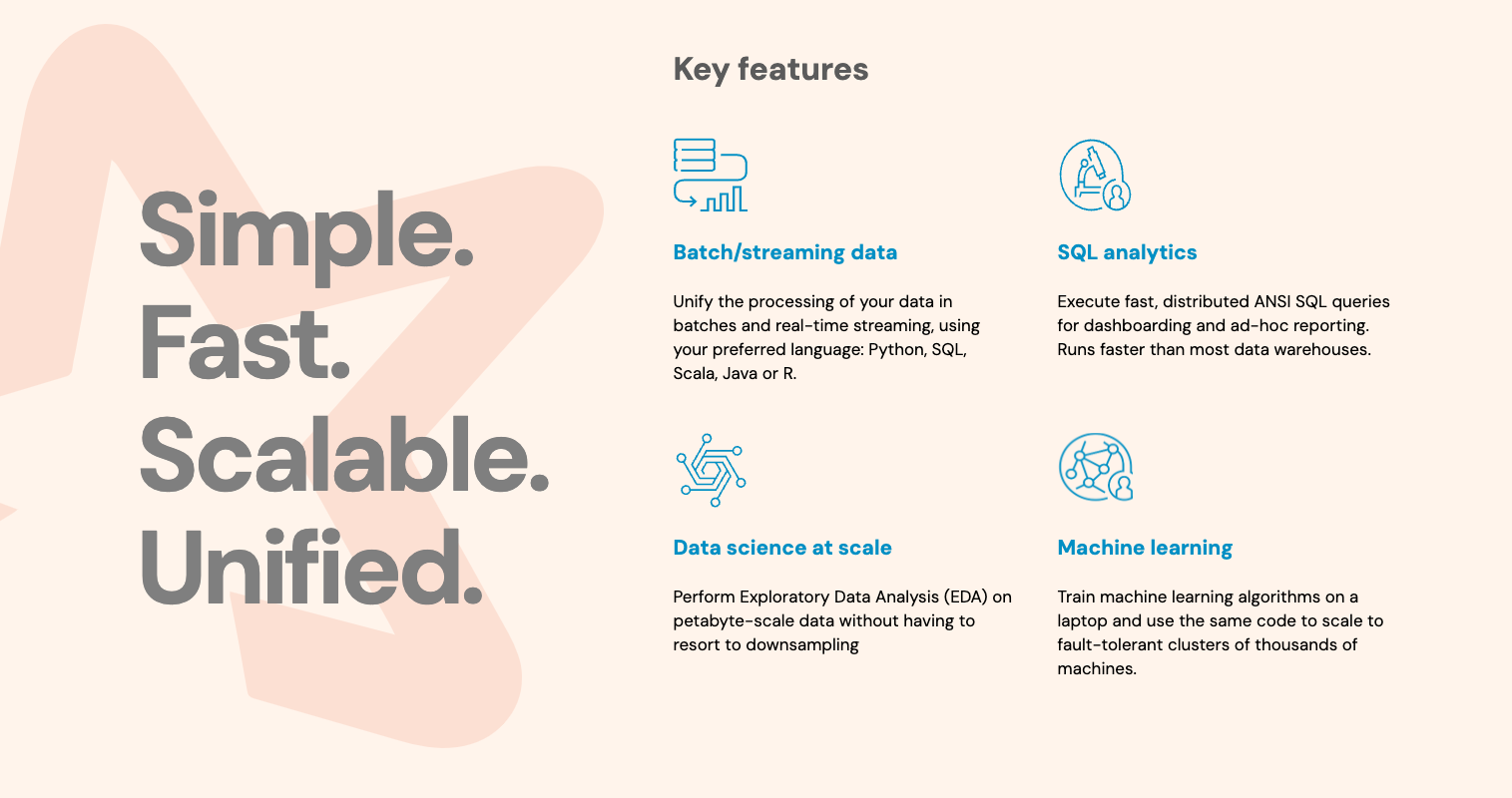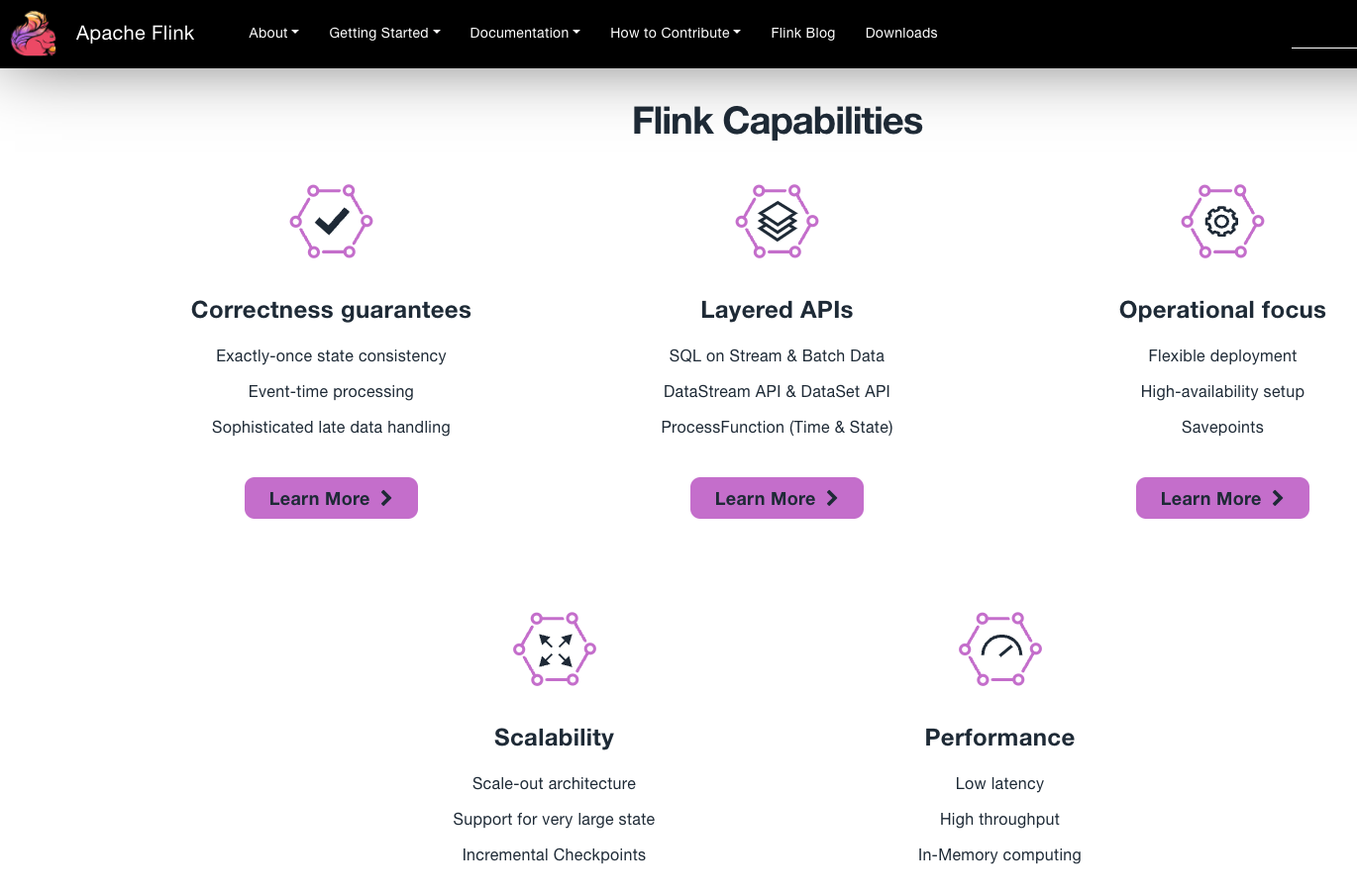track
Flink vs. Spark: A Comprehensive Comparison
Apache Spark and Apache Flink are two open-source data processing frameworks widely used for big data and analytics. While both stand out as powerful tools with robust data processing capabilities, they differ in their architecture and key functionalities.
We will explore Spark and Flink's key characteristics, focusing on processing models, data abstractions, state management, and performance. We will also explore how each framework handles batch and real-time data processing. Understanding their differences and similarities will help you choose the correct framework for your needs.
The Importance of Data Processing Frameworks
We all know the volume of available data is growing exponentially. Organizations that are trying to make use of big data can run into challenges of scalability and efficiency.
Data processing frameworks are a much-needed solution because they can support a variety of data operations including ingestion, transformation, and storage, even when working with terabytes of data. They provide a broad spectrum of tools and APIs, giving you flexibility for performing tasks ranging from basic operations to machine learning modeling. Additionally, data processing frameworks offer you complexity abstraction that simplifies the development and debugging processes of data processing applications.
Broadly speaking, data processing frameworks work by distributing the workload across multiple nodes in a cluster. Some frameworks are specially intended to process real-time data, enabling you to analyze data as it arrives. Others are optimized to process batch data, which is useful for your retrospective analysis.
What is Apache Spark?
Apache Spark is an open-source, distributed computing framework designed to handle large volumes of data efficiently and quickly. It uses a memory programming model, which implies it can store data in the main memory of cluster nodes, which significantly speeds up processing compared to other tools that rely more on disk access. Its easy-to-use interface allows you to perform complex data operations through an API set in several languages, such as Python and R, two of the main languages for Data Science.
Apache Spark can execute operations resiliently, meaning it can tolerate failures in the cluster nodes and recover automatically. This powerful feature is due to its component, the Resilient Distributed Dataset (RDD), which is a distributed collection of basic units that hold data records.
On the other hand, Spark's execution model, Directed Acyclic Graph (DAG), allows you to optimize how you execute your tasks in parallel. This component allows Spark to distribute the tasks across different nodes of the same cluster, taking advantage of all the available resources.
 Apache Spark main features. Source
Apache Spark main features. Source
What is Apache Flink?
Apache Flink is an open-source data processing system that stands out when you need to analyze real-time data and process large data with low latency and high performance. Using the same infrastructure, Apache Flink can also process batch data, which represents a big advantage when you need to build and run complex data pipelines that process real-time data on distributed systems. It offers an API set in several languages including Python and R and specialized libraries that help you build machine learning event processing pipelines.
Apache Flink treats your data as continuous flows of events, which is useful in applications where data is being constantly received and processed. This flow-based programming model is a key feature that leads to low latency in responding to events. Also, you can build complex and highly customized data processing pipelines using Apache Flink operations.
Flink efficiently manages state in real-time data processing applications. This means that you can maintain and update your applications' status as data arrives with fault tolerance.
 Flink Main Features. Source
Flink Main Features. Source
Key Considerations When Choosing Between Spark and Flink
Leveraging the features of a suitable data processing framework can help you improve the performance and efficiency of your data pipeline. Among all the features that Spark and Flink offer, there are some key points that you need to evaluate when choosing among these tools:
- Data Processing Model: Are you processing and analyzing batch or real-time data?
- Easy to Use: Does your application need flexible APIs? Which programming language are you using?
- Ecosystem and Compatibility: Which other tools and technologies are you incorporating into your data pipeline? Which specific tools and services are you already using in your infrastructure?
- Performance and State Management: Do you prioritize resource usage? Which type of workload and cluster configuration does your pipeline need? Does your application require complex state manipulations?
Key Similarities Between Spark and Flink
Even though Spark and Flink have key distinguishing features, they share several important characteristics. They are both designed to handle large-scale data-processing tasks with low latency. They both offer a set of APIs in several languages, including Python, Scala, Java, and R, and they are integrated with a larger big data tool ecosystem. Moreover, Spark and Flink implement performance optimizations.
Let's take a look at each of these similarities:
Distributed data processing model
Apache Flink and Apache Spark are designed to process large volumes of data in a cluster of computers. This feature allows you to horizontally scale your application to handle huge datasets by dynamically allocating and deallocating resources to workload across multiple nodes with low latency. Both frameworks can handle both batch and streaming data processing.
High-level APIs
Both Spark and Flink provide high-level APIs and abstractions implemented in several languages, including Scala, Python, and Java that allow you to write and run pipelines in your preferred language. These APIs make these frameworks easy to use when developing data processing applications. Moreover, Flink includes libraries for machine learning (FlinkML), complex event processing (FlinkCEP), and Graph processing (Gelly). Spark also offers libraries for machine learning (MLlib), graph processing (GraphX), and real-time data processing (GraphX).
Good integration with the big data ecosystem
Apache Spark as well as Apache Flink are integrated with an exhaustive ecosystem of big data tools, which includes Hadoop Distributed File System, Apache Kafka, and cloud storage systems such as Amazon S3.
Performance optimization
Both frameworks have a performance optimization implementation which maximizes the efficiency in the data processing. This feature allows you to perform complex tasks by leveraging Spark and Flink parallel execution, task planning, and query optimization. Spark employs the Catalyst optimizer while Flink has a cost-based optimizer for batch processing.
Key Differences: Spark vs. Flink
Apache Spark and Apache Flink share many similarities when considering their basic capabilities and data processing approaches. However, they also have significant differences regarding their strengths and areas of focus of their processing models, the maturity of their ecosystems and language support, and their approach to optimization and status management.
Data processing model
Apache Flink is mainly focused on real-time data processing. Because this framework is built on top of its streaming runtime and can also handle batch processing. On the other hand, Apache Spark was originally designed for batch processing, making it more suitable for retrospective analysis of large datasets. By implementing a micro-batch approach, Spark can also process streaming data but with latencies that result higher than Flink.
APIs and language support
As mentioned, both frameworks provide APIs in multiple programming languages. However, Flink’s support for Python is less mature which can represent a limitation if you are working with a data-scientist-centric team.
Maturity of the big data ecosystem
Even though both frameworks have good integration with big data tools, Apache Spark has a larger and more mature ecosystem, including a variety of connectors, libraries, and tools available. Apache Flink is growing the set of tools and extensions available but it still can be considered a less mature ecosystem.

Apache Spark Ecosystem. Source
Performance and status management
Apache Flink enables you to work with more advanced and flexible status management, which can represent an advantage if you are working with pipelines that need to maintain and update the status in real-time, such as event-time and processing-time windows processing, or windows for handling complex event patterns. Spark allows you to perform basic windowing functionality that works well when batch and micro-batching processing is required.
Spark vs. Flink: A Detailed Comparison
Apache Flink and Apache Spark show many similarities but also differ substantially in their processing approach and associated latency, performance, and state management. Also, they have a slightly different ecosystem maturity and language support. Which framework you choose will depend mainly on the specific requirements of your project. However, there are some features in which Spark or Flink excels compared to each other:
Data processing
Spark was originally designed for batch processing, but it now supports streaming data via its Spark Streaming module. Flink, on the other hand, was specifically developed for streaming data, but it now also supports batch processing.
- Winner: It depends on the use case. Spark is better for streaming, and Flink is better for batch processing.
Performance
Spark employs Resilient Distributed Datasets and data partitioning techniques to boost parallel processing and optimize resource usage. Flink leverages operator chaining and pipeline execution, enhancing its parallel processing and resource management efficiency. Generally, Flink is considered faster and offers better performance in real-time processing applications.
- Winner: Flink due to its better performance overall.
Windowing
Spark provides basic windowing features primarily suited to time-based implementations, fitting well within fixed or sliding time windows for both batch and streaming data processing. Flink boasts more advanced windowing capabilities, including event-time and processing-time-based windows, session windows, and custom window functions. Flink's windowing capabilities are notably more versatile and efficient, making it the preferred choice for complex needs.
- Winner: Flink due to its superior flexibility in handling complex windowing requirements.
Optimization
Spark utilizes the Catalyst optimizer, which excels in optimizing data transformation and processing queries and integrates the Tungsten execution engine to enhance framework performance. Flink features a cost-based optimizer specifically designed for batch-processing tasks, evaluating available resources and data characteristics to select the most efficient approach. Additionally, Flink's pipeline-based execution and low-latency scheduling significantly improve data processing speeds. The choice between Spark and Flink for optimization depends on specific use cases, as both offer distinct advantages.
- Winner: It depends on the case. Spark is great for complex data tasks. Flink is better for fast, batch processing.
Fault Tolerance
Spark achieves fault tolerance through its use of Resilient Distributed Datasets (RDDs), which are immutable partitioned data structures that allow for quick reconstruction in the event of failures. Flink, on the other hand, utilizes a distributed snapshot-based approach, capturing the state of the application at specific checkpoints, which facilitates rapid recovery from failures with minimal performance impact. While both frameworks provide effective fault tolerance, Flink's method generally results in quicker recovery times and less disruption to ongoing processes, making it the preferable choice in scenarios where minimizing downtime is critical.
- Winner: Flink due to its more efficient fault-tolerance mechanism that enables faster recovery with less disruption.
Language Support and APIs
Spark supports an array of programming languages including Scala, Java, Python, and R, making it highly attractive to both developers and data scientists due to its extensive collaborative potential and a comprehensive set of APIs for these languages. Flink, while supporting Java, Scala, and Python with intuitive and user-friendly APIs, offers more limited Python capabilities, which may hinder its adoption among data science teams. Spark's superior Python support makes it more appealing for data-centric teams where Python is predominantly used.
- Winner: Spark due to its superior support for Python, a language extensively used in data science.
Ecosystem
Spark boasts a complete and mature ecosystem, seamlessly integrating with a broad array of big data tools such as Hadoop, Hive, and Pig, among others. This extensive compatibility makes Spark a robust choice for complex data environments requiring diverse toolsets. Flink has a more limited range of integrations with other big data tools, though it excels in its integration with Apache Kafka. Due to its more comprehensive and mature integrations, Spark generally presents a stronger ecosystem.
- Winner: Spark due to its broad and mature ecosystem, which offers seamless integrations with numerous big data tools, such as Hadoop, Hive, and Pig.
Flink vs Spark: A summary
Below, you can find a table summarizing the key differences between Spark and Flink:
| Categories | Spark | Flink | Winner |
|---|---|---|---|
| Data Processing | Batch-oriented model | Real-time oriented model | Depends |
| Performance | RDDs and data partitioning | Operator chaining and pipeline execution | Flink |
| Windowing | Time-based functionalities | Event-time, session, and custom functions | Flink |
| Optimization | Catalyst optimizer | Cost-based optimizer | Depends |
| Fault Tolerance | Achieved by RDDs | Distributed snapshots | Flink |
| Language and API Support | Comprehensive support | Several languages, Python not advanced | Spark |
| Ecosystem | Full integration with big data tools | Integration with some tools, excels with Kafka | Spark |
Final thoughts
Choosing the most suitable data processing framework can improve your data pipeline performance. Among all the frameworks, Apache Spark and Apache Flink stand out as two powerful and versatile tools with their distinct strengths and capabilities.
Spark is excellent suited for batch processing, offering a variety of tools, APIs, and full integration with other big data technologies. If you are interested in learning how to use Spark from Python, check out our Introduction to PySpark course and our Getting Started with Pyspark tutorial. Flink stands out for real-time and streaming data processing because it offers efficient state management, windowing functionalities, and low-latency performance.
Ultimately, the choice between these two frameworks will depend on your project-specific requirements and needs. To understand these tools well, it’s best to continue reading and get some practice using the following resources.

Learn with DataCamp
course
Cleaning Data with PySpark
course
Big Data Fundamentals with PySpark
blog
Kafka vs SQS: Event Streaming Tools In-Depth Comparison
Zahara Miriam
18 min
blog
Top 30 PySpark Interview Questions and Answers for 2024
cheat sheet
PySpark Cheat Sheet: Spark DataFrames in Python
tutorial
Apache Spark Tutorial: ML with PySpark
tutorial
Snowflake vs AWS: Choosing the Right Cloud Data Warehouse Solution
Gus Frazer
13 min
tutorial